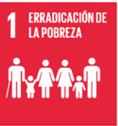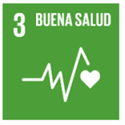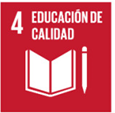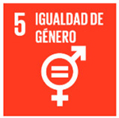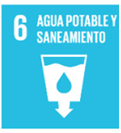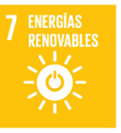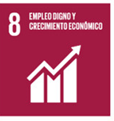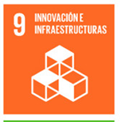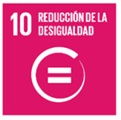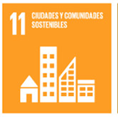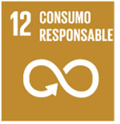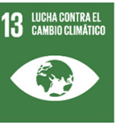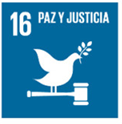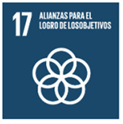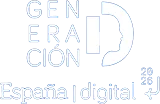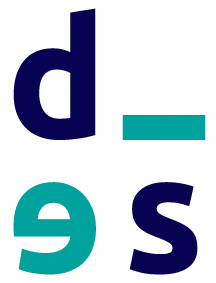14/10/2019
The Sustainable Development Goals (SDGs) are the most ambitious program in the history of humanity . They are 17 goals to change the world, signed by 193 countries four years ago. The target date for this is 2030 and Spain is committed to ensuring that, by 2020, 100% of the population is aware of the significance of these changes and is sensitized to the transformations they entail.
Although often associated with environmental advocacy and climate change, the 17 SDGs go beyond that, and are mainly summarized in three major goals: eradicating extreme poverty, combating inequality, and addressing climate change.
And how could it be otherwise, digitization plays a key role in achieving these objectives. If Digital Transformation is the lever that moves the economy and society in the 21st century, it is also the lever that moves the economy and society in the 21st century, especially when it comes to facing any challenge, especially one with as much consensus as the 17 SDGs.

Changing the world for the better is a priority for the entire technology sector, as revealed by reports such as the one prepared by the International Telecommunication Union (ITU), the United Nations agency specializing in Information and Communication Technologies (ICT).
But how can technologies concretely help to build a world that is less poor, less unjust and more nature-friendly? Let’s go through the 17 goals one by one to see what digitalization can do for the SDGs.
Thanks to digital financial services, many people are participating in the digital economy for the first time. Access to financial services has proven to be a critical step in helping people move out of poverty.
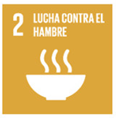
Patients can contact health care services regardless of their proximity to the health care facility.
Healthcare workers can learn and prepare for disease outbreaks, identify patient symptoms, follow established treatment protocols, perform remote diagnostics or access expert assistance.
And Big Data can analyze trends and make projections about disease outbreaks, health service use, patient knowledge and attitudes and practices.
Mobile devices allow students to access learning resources anywhere, anytime. Teachers use them for training and interactive tutoring. In fact, mobile learning has the ability to help break down economic barriers, rural-urban differences and gender inequality.
ICT can offer great opportunities for gender equality by allowing everyone to have access to the same online resources and opportunities. They provide new opportunities for women’s economic empowerment by creating entrepreneurial and employment opportunities for women as project owners and managers, as well as workers.
Technology is particularly relevant for smart water management, facilitating the measurement and control of supply, as well as the necessary interventions, and enabling local professionals to ensure equitable and sustainable extension of water, sanitation and hygiene services.
Technology and energy efficiency can be connected in two ways: “greening ICT” and “greening through ICT”. In the first case, ICTs are being transformed and developed to be more environmentally friendly. In the second case, ICT-enabled solutions (e.g. smart grids, smart buildings, smart logistics and industrial processes) help transform the world towards a more sustainable future.
The development of digital skills should be prioritized in the youth employment and entrepreneurship strategies of all countries. It’s not simply that most jobs and businesses require them, but that digitization is transforming the way business is done everywhere and creating new job opportunities.
5G technology will provide scalable solutions to all SDGs. Universal and affordable access to the Internet must be the backbone of the 21st century economy.
Digitalization enables the most vulnerable segments of society, including those living with disabilities, to access information and knowledge.
Digital Transformation is essential in delivering innovative approaches to managing cities more effectively, through smart buildings, smart water management, intelligent transportation systems and new ways of managing energy consumption and waste.
Responsible consumption involves increasing de-materialization and virtualization. Cloud computing, smart grids, smart meters and reduced ICT energy consumption have a positive impact on reducing our consumption.
Satellite monitoring plays a key role in monitoring the earth, providing climate and weather information, forecasting and early warning systems.
This technology helps mitigate the effects of climate change through prediction and early warning systems.
Satellite-based tracking provides timely and accurate global data, while local sensors provide timely updates in real time. Big Data allows us to analyze short- and long-term trends in terms of biodiversity, pollution, weather patterns, ecosystem evolution and plan mitigation activities.
Digitalization helps here in much the same way as in SDG 14. Satellite tracking and Big Data are indispensable to advance better conservation of the terrestrial ecosystem.
Technology plays a key role in crisis management, humanitarian aid and peacebuilding. The increasing use of open data by governments increases transparency, empowers citizens and helps drive economic growth. ICT is also essential in terms of record keeping and tracking government data and local demographics.
When natural or man-made disasters occur, technologies are crucial in obtaining, communicating and transmitting accurate and timely information, enabling an appropriate response.
For all the above reasons, ICTs are crucial to achieving all the SDGs, as they are catalysts that accelerate the three pillars of sustainable development: economic growth, social inclusion and environmental sustainability.


